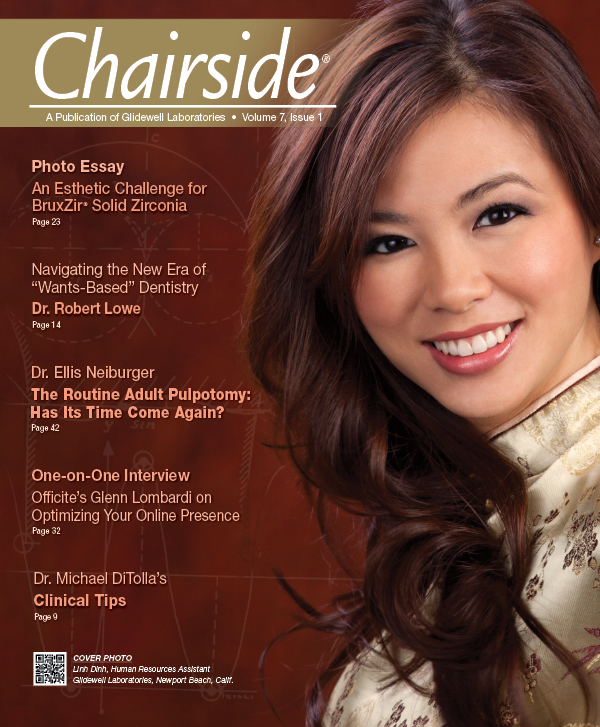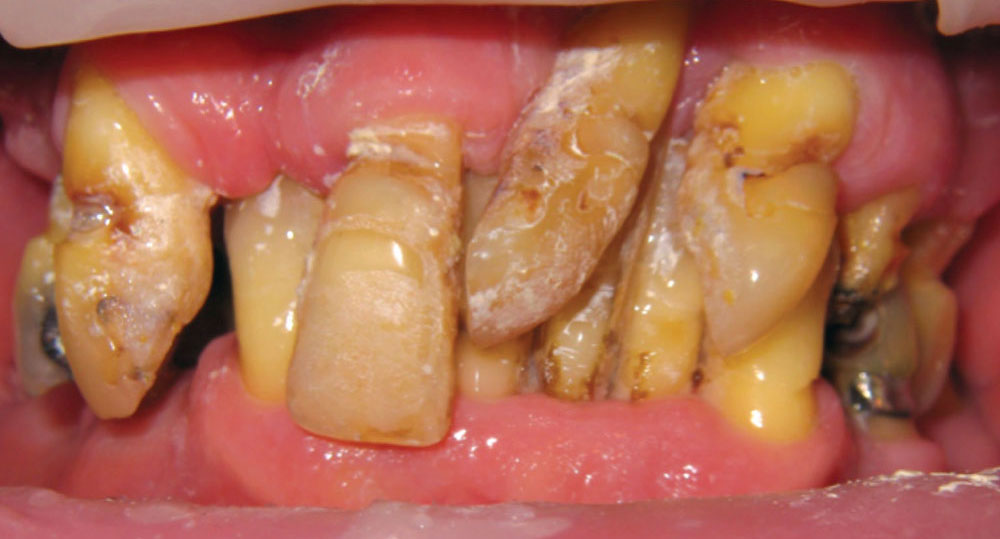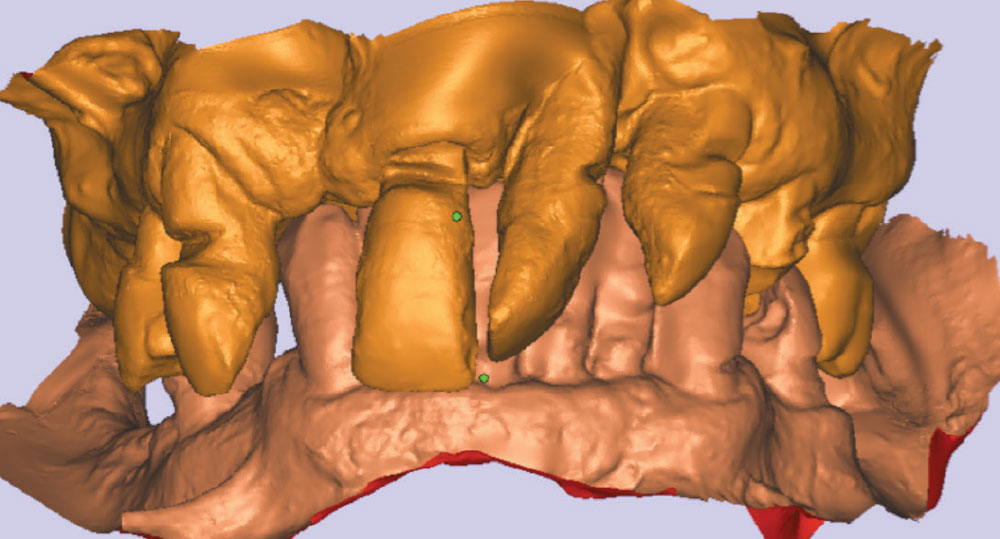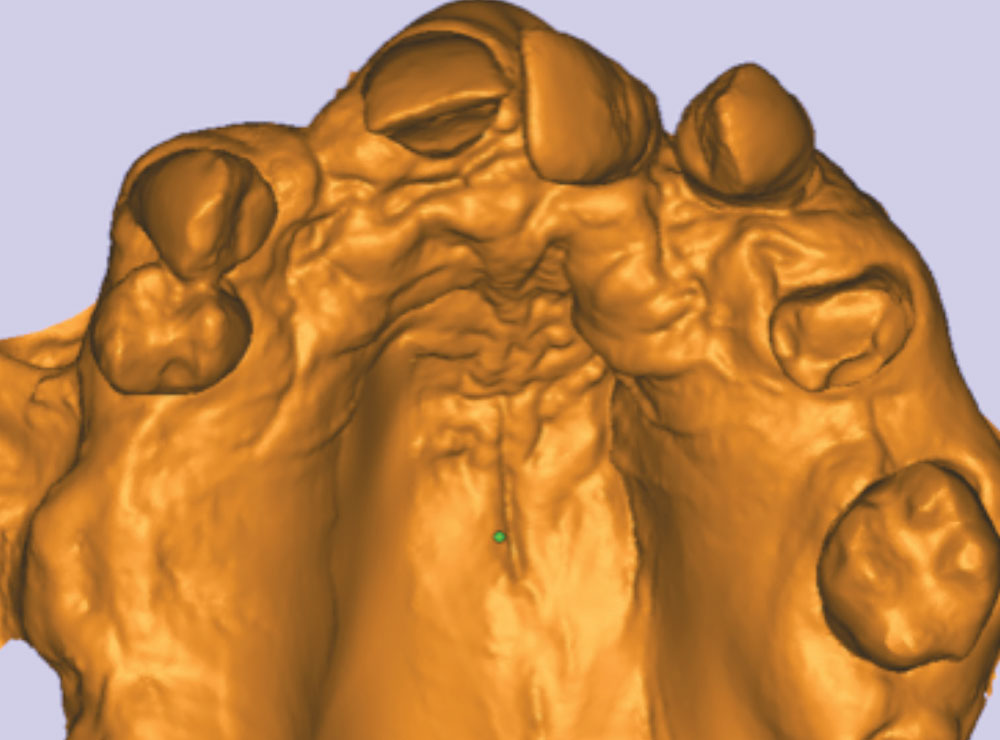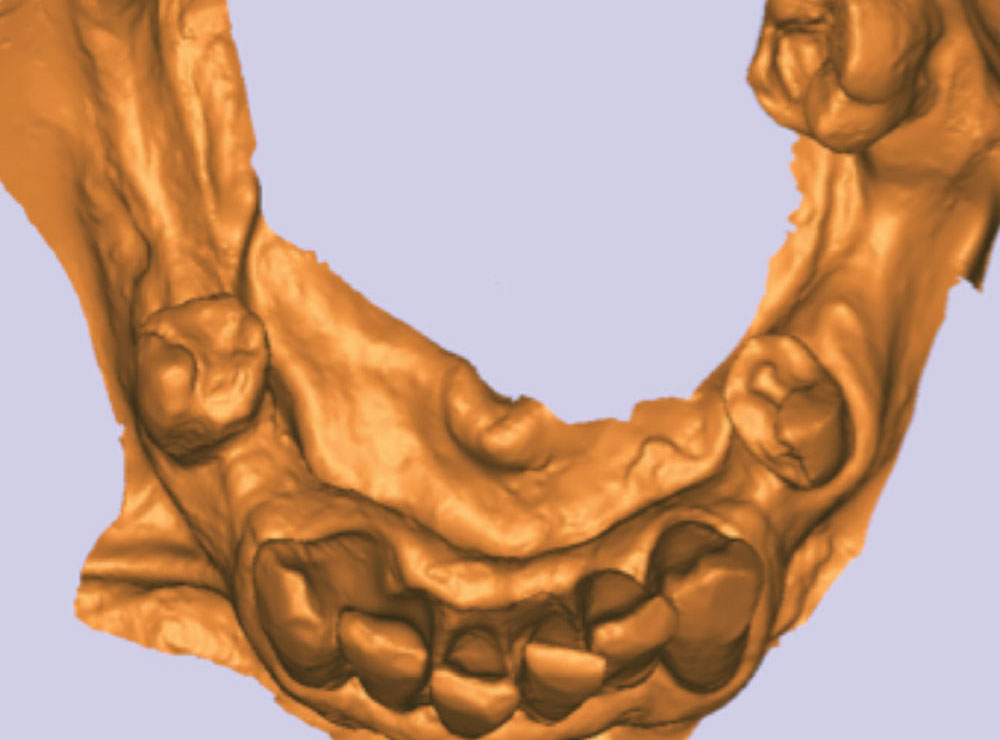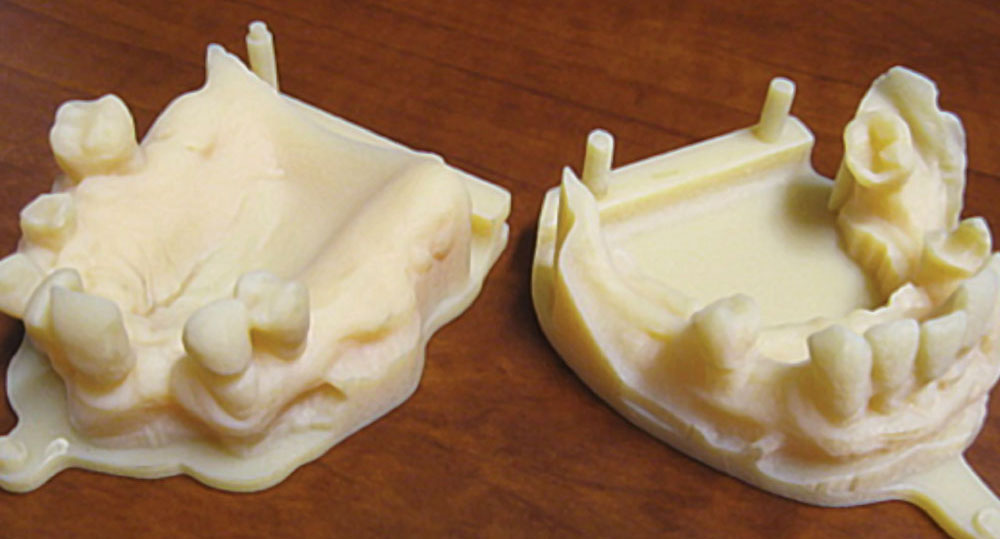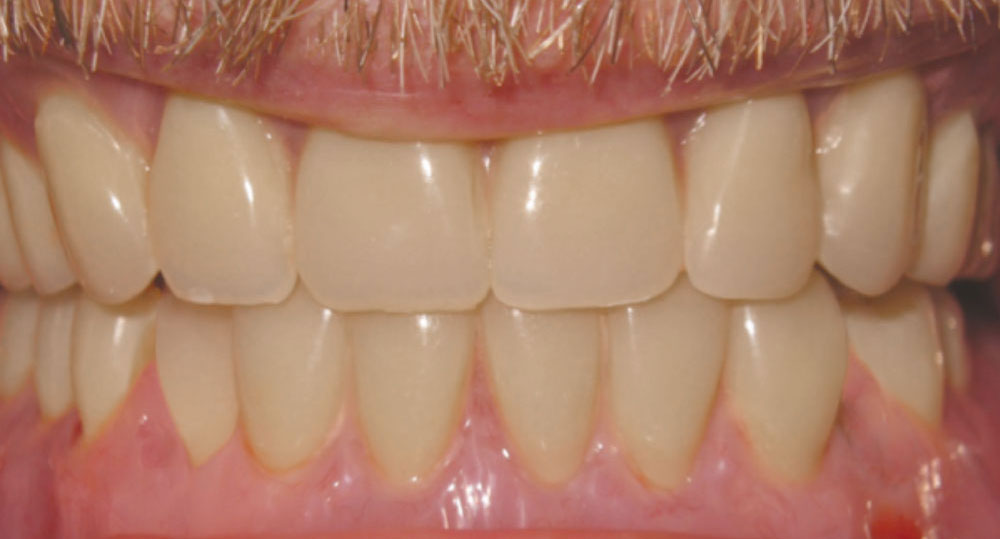Digital Impressions for an Immediate Denture
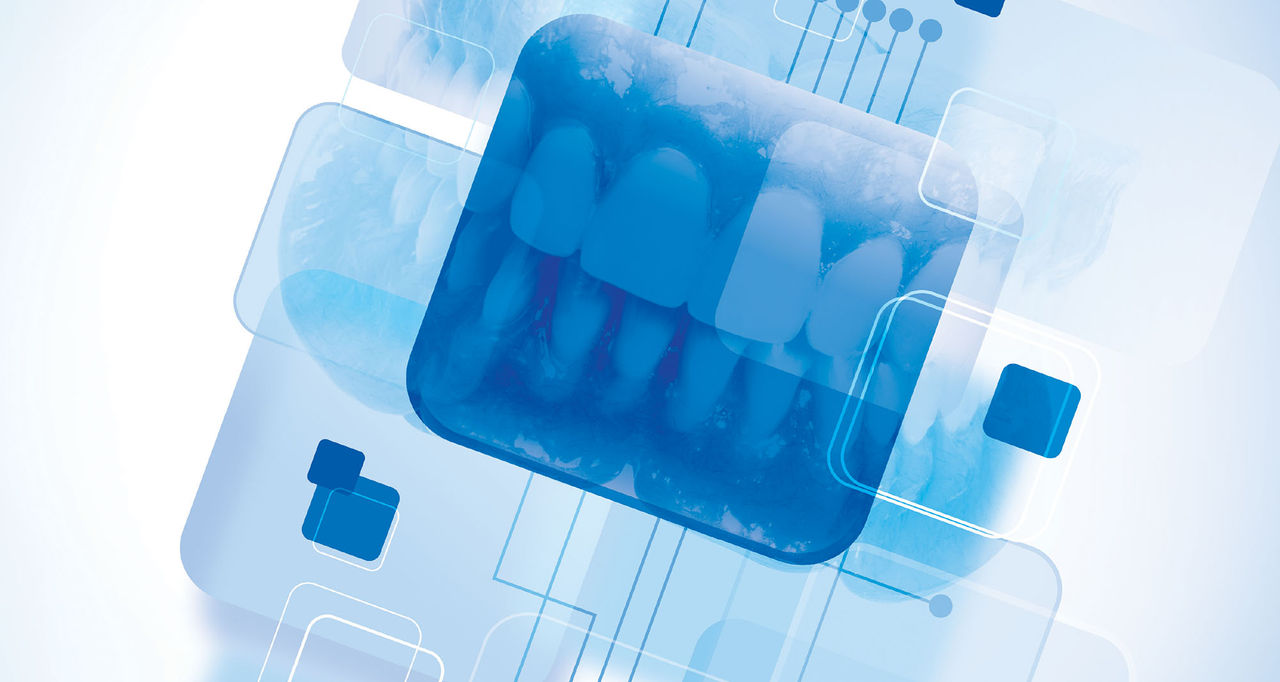
The following case illustrates how digital impressions are not only superior to conventional impressions, but in some instances necessary.
A 60-year-old male presented with severe periodontal disease, tooth loss, hyper-eruption and a collapsed bite (Fig. 1). The patient had both posterior and anterior stops; however, due to the extreme mobility of so many of the teeth in occlusion, an accurate bite with traditional bite registration material would have been difficult at best. Traditional immediate dentures require accurate models mounted in proper vertical dimension. Sometimes the placement of bite registration material in the presence of tooth mobility makes it difficult to check if the patient is biting correctly. There was also a high risk in this case that many of the patient’s remaining teeth would be inadvertently extracted when removing a conventional impression. One of the fears that kept the patient from seeing the dentist over the years was the “trapped” feeling of having an impression taken.
One of the fears that kept the patient from seeing the dentist over the years was the “trapped” feeling of having an impression taken.
Based on my experience with digital dentistry, I felt it would enable me to provide the perfect solution for this patient. By using the IOS FastScan® Digital Impression System (IOS Technologies; San Diego, Calif.), I was able to save the patient the trauma of having a conventional impression taken, while reducing the inherent inaccuracy of this method and the risk of inadvertent extraction.
After scanning both arches and the palate, the scans were used to build the digital models and a bite scan was used to articulate the two models into occlusion (Figs. 2–4). The digital models were then uploaded to Glidewell Laboratories.
Once the digital files were received at Glidewell Laboratories, a physical model was created using an Objet® 3D printer (Objet Geometries Ltd.; Billerica, Mass.) (Fig. 5). The physical models were then sent to Glidewell’s Removables department, where an immediate denture was fabricated.
The denture was then sent back to my office. I was impressed with the fit and occlusion of the immediate denture, which needed no adjustments (Fig. 6).
No adjustments were needed due to the degree of exactness with which we were able to capture the bite. By using the IOS FastScan, I was able to complete an impression without any material in the way, no overclosure and no risk of premature extraction.
Dr. Dean Saiki is in private practice in Oceanside, California, specializing in cosmetic, laser, implant and digital dentistry. Contact him at dentist@deansaiki.com or 760-732-3456.

